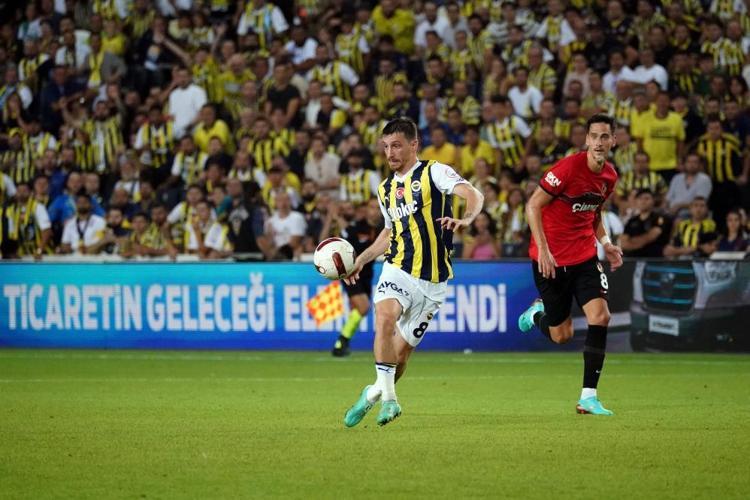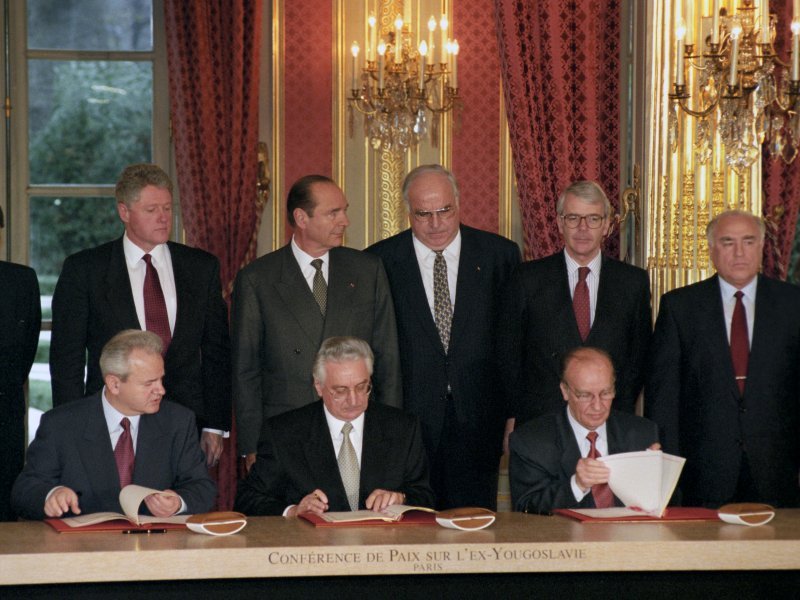A Deep Dive Into Mourinho's Tactics: Featuring Tadic And Dzeko

Table of Contents
Mourinho's Core Tactical Principles
Mourinho's tactical philosophy isn't about flashy attacking football; it's about control, efficiency, and winning. His methods are built on several core principles.
Defensive Solidity as a Foundation
Defensive stability is the cornerstone of any Mourinho team. He prioritizes a compact defensive shape, minimizing space and opportunities for the opposition.
- Emphasis on a compact defensive shape: Players maintain close proximity, limiting passing lanes and creating a difficult environment for attackers.
- Deep defensive line and disciplined midfield screening: This prevents quick through balls and forces opponents into wide areas, where they are easier to defend.
- Strategic fouling and tactical time-wasting: While controversial, these tactics are used strategically in crucial moments to disrupt the opponent's rhythm and protect a lead.
- Examples: His Inter Milan side's Champions League triumph in 2010 showcased his mastery of defensive organization, neutralizing potent attacks with disciplined defending. His Chelsea teams were similarly known for their defensive resilience.
Counter-Attacking Prowess
While defense is paramount, Mourinho's teams are far from passive. They are masters of the counter-attack.
- Exploiting opponent weaknesses: Mourinho meticulously studies opponents, identifying vulnerabilities to exploit on the break.
- Quick, incisive passing: Swift, accurate passing is crucial for launching quick transitions from defense to attack.
- Role of wingers: Wingers are vital in stretching the play, creating space for central attackers to exploit.
- Case studies: Real Madrid under Mourinho demonstrated the effectiveness of this approach, utilizing Cristiano Ronaldo's pace to devastating effect on the counter.
Adaptability and Flexibility
Mourinho isn't a one-trick pony. His tactical flexibility is a significant strength.
- Adjusting tactics based on opponent strengths and weaknesses: He tailors his approach to each game, exploiting any perceived weakness in the opposition.
- Mastering different formations: He's comfortable employing various formations like 4-3-3, 4-2-3-1, and 3-4-3, adapting to suit the players at his disposal and the specific match context.
- In-game tactical adjustments: He frequently makes in-game changes, reacting to the flow of the match and exploiting opportunities. Substitutions are often used tactically to shift momentum or solidify a lead.
Integrating Tadic and Dzeko into Mourinho's System
How would Mourinho integrate the talents of Dusan Tadic and Edin Dzeko into his tactical framework?
Tadic's Role
Tadic's creative playmaking is a valuable asset in any system.
- Creative playmaking: His vision and passing ability would be crucial in unlocking defenses.
- Wide midfield role or No. 10: He could operate effectively in either position, providing service to the strikers and linking midfield and attack.
- Passing range and set-piece expertise: His accuracy from set pieces would provide a valuable goal-scoring threat.
- Linking defense and attack: His ability to transition play quickly would be vital in Mourinho's counter-attacking strategy.
Dzeko's Role
Dzeko's physical presence and clinical finishing would fit seamlessly into Mourinho's style.
- Target man and hold-up play: His strength and ability to hold up the ball would allow his team to build attacks patiently.
- Aerial prowess and finishing ability: His heading ability and clinical finishing would provide a consistent goal threat.
- Leading the line in a counter-attacking system: His ability to make intelligent runs behind the defense would be vital in exploiting spaces.
- Playing alongside other attackers: Mourinho would need to consider how to best integrate Dzeko with other attacking players to maximize their combined effectiveness.
Potential Tactical Setups for a Mourinho Team Featuring Tadic and Dzeko
Several formations could effectively utilize both Tadic and Dzeko's strengths under Mourinho's guidance.
- 4-2-3-1: Dzeko would lead the line, supported by Tadic in the number 10 role, with two box-to-box midfielders providing defensive cover and attacking impetus.
- 4-3-3: Tadic could operate as a wide midfielder, cutting inside to create chances, while Dzeko leads the line, supported by another striker.
- 3-4-3: A more fluid formation allowing for quick transitions and wing play, ideal for Dzeko's hold-up play and Tadic's creativity.
Each formation would need careful consideration of player roles and responsibilities, adapting based on opponent matchups.
Conclusion
José Mourinho's tactical philosophy, characterized by defensive solidity, effective counter-attacks, and impressive adaptability, is widely studied and admired. Understanding how he would integrate players with the caliber of Tadic and Dzeko into his system reveals the potential for a highly effective and dynamic team. By leveraging their individual strengths within a structured framework, Mourinho could orchestrate a successful and potent attacking force. Want to learn more about the tactical nuances of other managers and their approach to football? Continue exploring the world of Mourinho's tactics and other prominent managerial styles!

Featured Posts
-
 Mass Abidjan Un Premier Rendez Vous Pour Les Technologies Spatiales Africaines
May 20, 2025
Mass Abidjan Un Premier Rendez Vous Pour Les Technologies Spatiales Africaines
May 20, 2025 -
 Aghatha Krysty Fy Esr Aldhkae Alastnaey Imkanyat La Hdwd Lha
May 20, 2025
Aghatha Krysty Fy Esr Aldhkae Alastnaey Imkanyat La Hdwd Lha
May 20, 2025 -
 Tadic Upozorava Rusenje Daytonskog Sporazuma Steti Sarajevu
May 20, 2025
Tadic Upozorava Rusenje Daytonskog Sporazuma Steti Sarajevu
May 20, 2025 -
 Rain Timing The Most Up To Date Predictions
May 20, 2025
Rain Timing The Most Up To Date Predictions
May 20, 2025 -
 Understanding The Us Missile Launcher And Chinas Reaction
May 20, 2025
Understanding The Us Missile Launcher And Chinas Reaction
May 20, 2025
